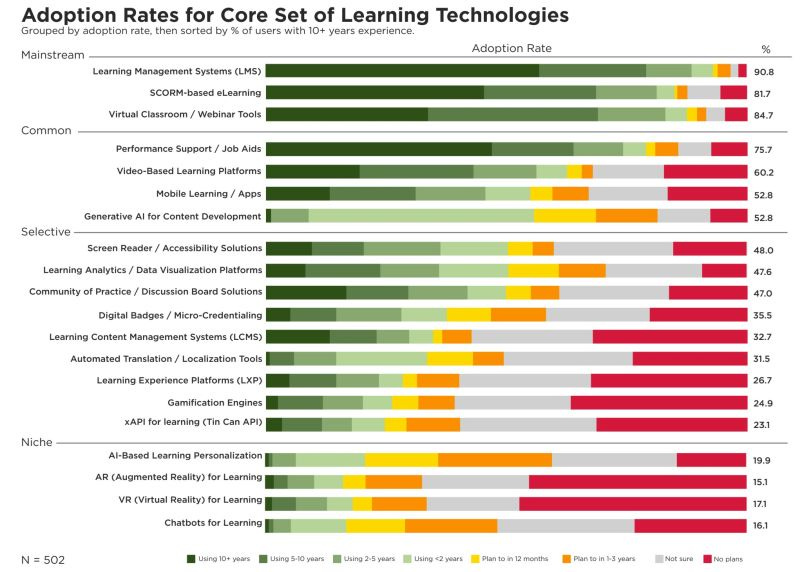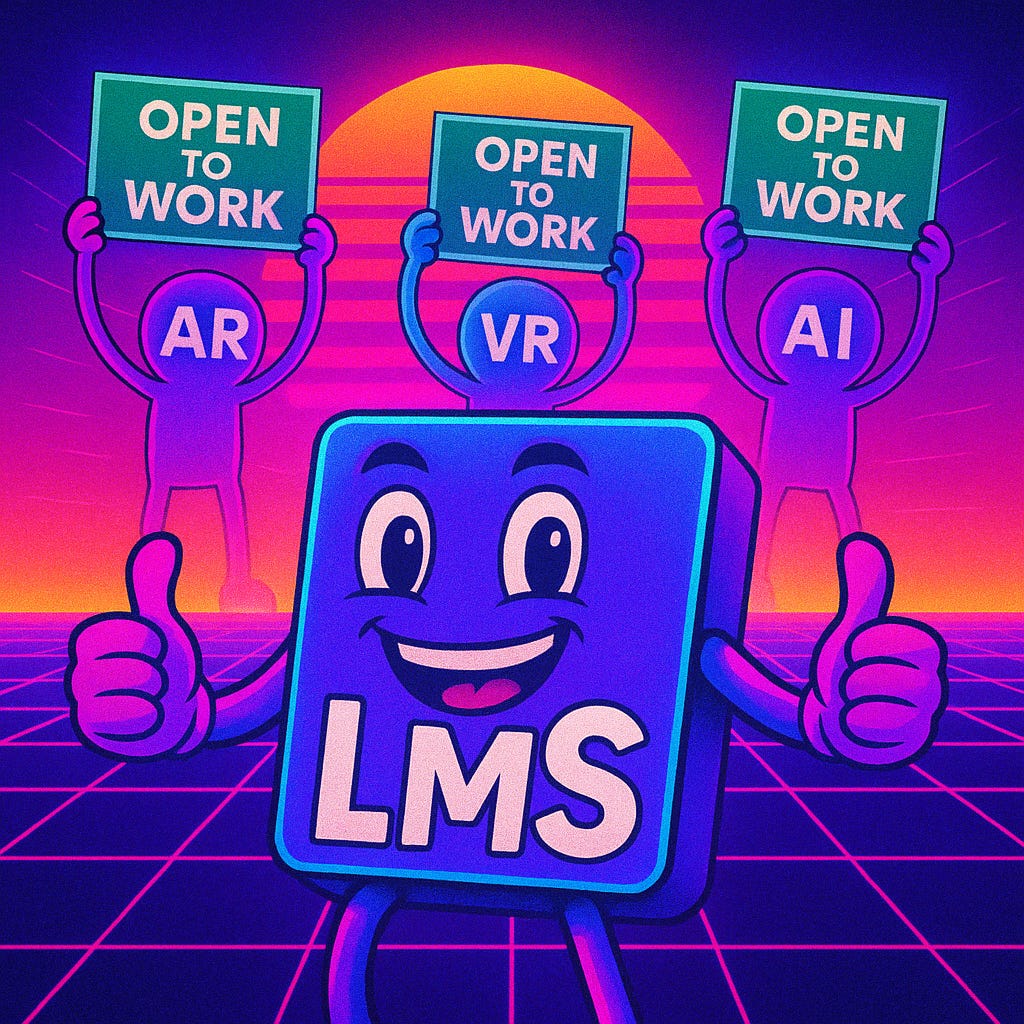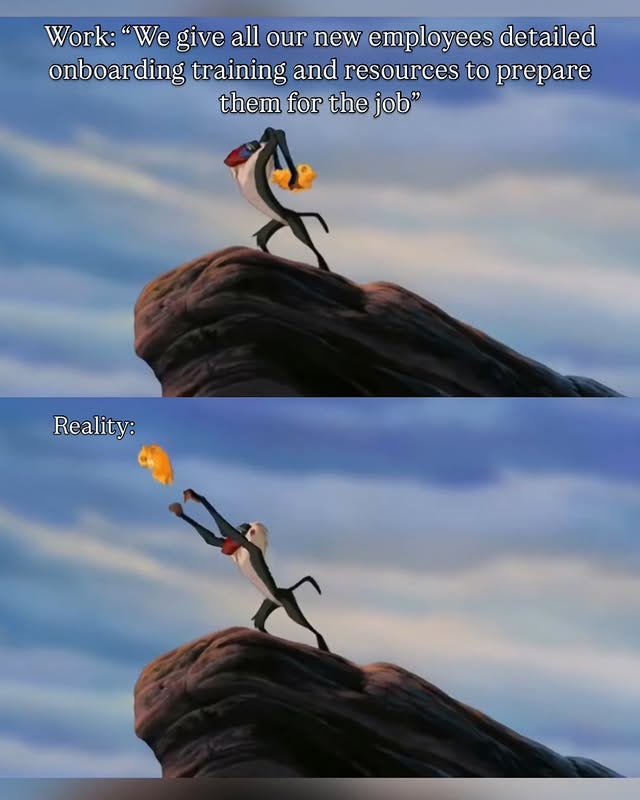Workplace learning: The coffee room vs the classroom
Building informal and formal learning into the workplace.
A couple of years ago, a client asked me to produce an online course that people could dip into when browsing their LMS. As gently as I could, I asked them when they had last browsed their LMS.
They never had.
We ended up creating a series of job aids: practical tools that people could use when they encountered a problem. Useful, yes, but not what most people think of as ‘learning’.
At work, ‘learning’ usually means a course.
And it’s almost always something that other people do, because ‘I don’t have time for learning’.
Even L&D professionals fall into this trap.
👩🏻🏫 Learning isn’t education
This problem isn’t new. 20 years ago, Jay Cross opened his book Informal Learning with the line:
‘Workers learn more in the coffee room than in the classroom.’
Challenging projects, conversations with colleagues, watching how others handle situations, and easy access to resources are all part of the workplace learning mix. Most of the time, they have a greater impact than any online course or workshop.
But for many organizations, this is a problem. Because this kind of learning doesn’t feel like learning.
Speaking to another client this week, they told me that one of the main reasons people leave their organization is a lack of development opportunities. They wanted to equip managers with the ability to highlight how experiencing challenges and exposure to role models are as much a part of learning as education.
And while they’re undoubtedly right, to the employee, this often feels like a cop out:
‘No, we didn’t spend £1,000 on that course you asked for, but you did get to work on that awful project.’
This response manages to highlight a transformative learning experience and sound like neglect, all at the same time.
🏆 Make the informal visible, make the formal valuable
Last week, my colleague Claire and I recorded a podcast with L&D advisor, writer and speaker David Kelly. Our topic? The irony of L&D: How even L&D professionals experience this dissonance.
Like everyone else, they have no time for “learning”. Like everyone else, they probably do learn all the time. Like everyone else, they rarely think of informal learning as a real investment in themselves.
How can we highlight the benefits of informal learning if we don’t even recognize them ourselves?
I think the answer here is two-fold:
First, make an explicit connection between the informal and career development. The client I spoke to is absolutely right that experience and exposure shape who we are and build our skills. L&D pros should recognize that this is happening to them and to others, and speak about it in conversations with colleagues, stakeholders and in their programs.
Second, offer formal learning as part - and an important part - of the experience/exposure/education mix. At Mindtools, we each have a personal learning budget we can use. But there are also things we do within the Custom and Insights team to offer formal learning for free:
🧑🤝🧑 a buddying system, where learning designers have a peer who they check in with regularly;
📖 book clubs, to allow space for discussing ideas;
💬 teams channels, one focused on solving challenges with authoring tools and another for help with accessibility
🎨 creativity days, where twice a year the learning designers are encouraged to step away from client work and learn something new. This can be work-related or not (one team member learned cross-stitch!)
The latter of these is particularly relevant to learning professionals. If you’re going to design learning for others, it’s crucial that you have ongoing recent experience of what it’s like to be a novice.
(For me, I play golf to make sure I never lose that feeling. Ever.)
It might be that, in your context, these kind of initiatives are frowned upon. As David Kelly pointed out in our podcast, it’s easier for someone in a learning tech firm to start these initiatives than for someone working in a bank.
But, no matter your context, you can always push boundaries, role model the behaviors you want to see… or act first and beg forgiveness later.
As the world of work continues to evolve, so too do employees need to evolve. No one’s going to shout at you for learning something new.
And you’re probably learning more often than you think.
The real challenge isn’t making informal learning happen: it’s valuing it, encouraging it, and making sure your people feel the benefits. If you’re not sure where to start, our learning consultants can help. Email custom@mindtools.com or hit reply if you’re reading this in your inbox.
🎧 On the podcast
A couple of weeks ago, our friend Carl Akintola wrote a provocative guest post for The L&D Dispatch, challenging L&D practitioners to interogate their motives for measuring learning impact.
Are they in it purely for the sake of evaluation? Or are they trying to justify their existence?
Now, the follow-up! In this episode of The Mindtools L&D Podcast, Carl took over hosting duties and challenged Ross D and myself to answer these questions.
Cue guilty side-eyes and existential dread.
Check out the episode below. 👇
You can subscribe to the podcast on iTunes, Spotify or the podcast page of our website.
📖 Deep dive
Here’s a great report from Learning Guild authors Megan Torrance and Lauren Milstid: ‘Workplace Learning Technologies Adoption’.
And contrary to what you might hear in the biz, most organizations are not using AI either as a chatbot for learning or for learning personalization.
In their survey of 502 workplace L&D professionals, the authors found that while AI is common in content development, learning analytics and translation, its use for driving meaningful learning outcomes is limited. Other cutting edge technologies like AR (Augmented Reality) and Virtual Reality (VR) also remain ‘Niche’.
By far the most dominant technologies were the old classics: the LMS, SCORM-based eLearning and virtual classroom tools.
Perhaps this shouldn’t be a surprise: as a technical standard, SCORM has made it incredibly easy to create trackable content in a variety of tools that then work on any Learning Management System.
Attempts to create alternatives like xAPI have been stop-start without a co-ordinated push from both authoring-tool vendors and platform providers.
Still, it bumps up against the prevalent narrative that ‘the LMS is dead’.
Who has two thumbs and is more popular than AR, VR and AI? This guy 👇
Torrance, M. and Milstid, L. (2025). 'Workplace Learning Technologies Adoption'. The Learning Guild.
👹 Missing links
❤️🩹 Have most employees fallen out of love with their work?
Gallup’s ‘State of the Global Workforce 2025’ report makes for gloomy reading. Based on interviews that took place all over the world, the report finds that only 21% of employees would be categorized as ‘engaged’ at work. 17% are actively disengaged, which means they are: ‘acting out their unhappiness. Every day, these workers potentially undermine what their engaged coworkers accomplish.’ The biggest factor driving these results is the manager, and the biggest factor that explains differences in managers is whether they received ‘even rudimentary training in role responsibilities’. Imagine if they received great training?
I was never a huge fan of The Sims, the life simulation game that became a global smash in the early 2000s. But as a Star Trek fan, I have some understanding of the notion of ‘constructed languages’: languages created for a specific purpose, with their own rules and norms (Qapla!). This great piece, shared by Emily Decker from our translation partenr Comtec, describes how the language of the Sims is ‘like a musical tapestry woven with influences from various real-world languages’. It’s a fun read and a reminder of a simpler time.
👋 And finally…
Since I was writing this week about the gap between what learning professionals describe as ‘workplace learning’ and what colleagues perceive as learning, this Instagram post gave me a chuckle:
👍 Thanks!
Thanks for reading The L&D Dispatch from Mindtools! If you’d like to speak to us, work with us, or make a suggestion, you can email custom@mindtools.com.
Or just hit reply to this email!
Hey here’s a thing! If you’ve reached all the way to the end of this newsletter, then you must really love it!
Why not share that love by hitting the button below, or just forward it to a friend?





